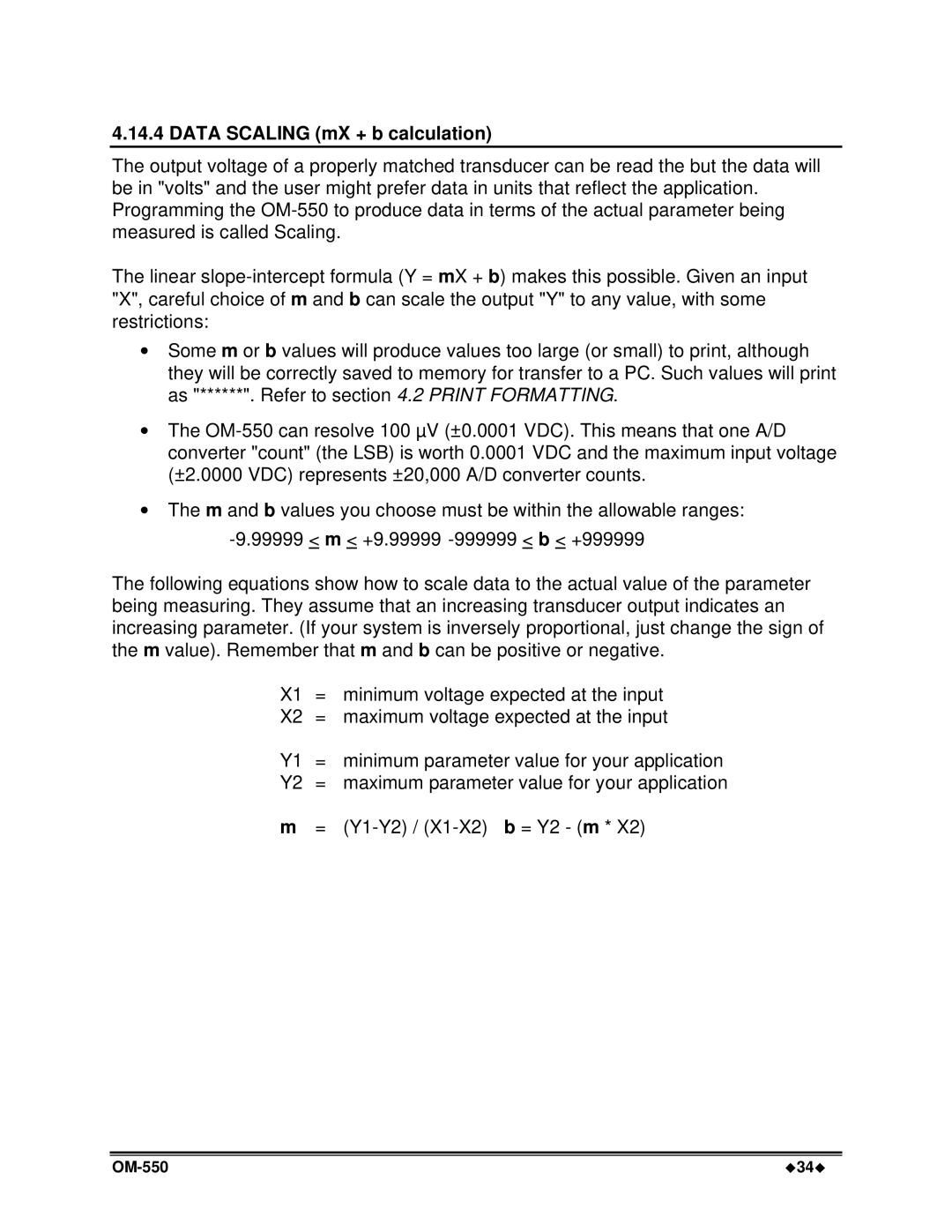
4.14.4 DATA SCALING (mX + b calculation)
The output voltage of a properly matched transducer can be read the but the data will be in "volts" and the user might prefer data in units that reflect the application. Programming the
The linear
∙Some m or b values will produce values too large (or small) to print, although they will be correctly saved to memory for transfer to a PC. Such values will print as "******". Refer to section 4.2 PRINT FORMATTING.
∙The
∙The m and b values you choose must be within the allowable ranges:
The following equations show how to scale data to the actual value of the parameter being measuring. They assume that an increasing transducer output indicates an increasing parameter. (If your system is inversely proportional, just change the sign of the m value). Remember that m and b can be positive or negative.
X1 | = | minimum voltage expected at the input |
X2 | = | maximum voltage expected at the input |
Y1 | = | minimum parameter value for your application |
Y2 | = | maximum parameter value for your application |
m | = |
u34u |
